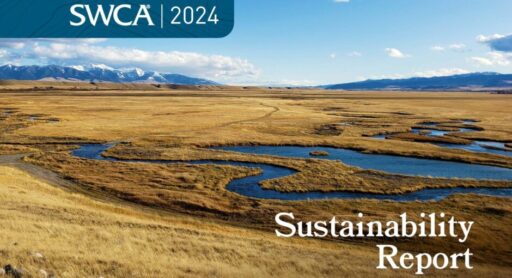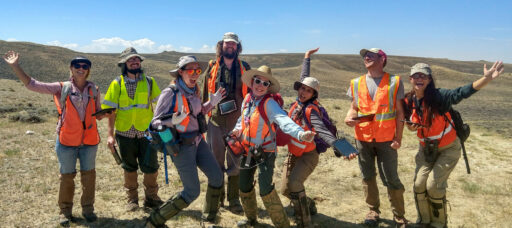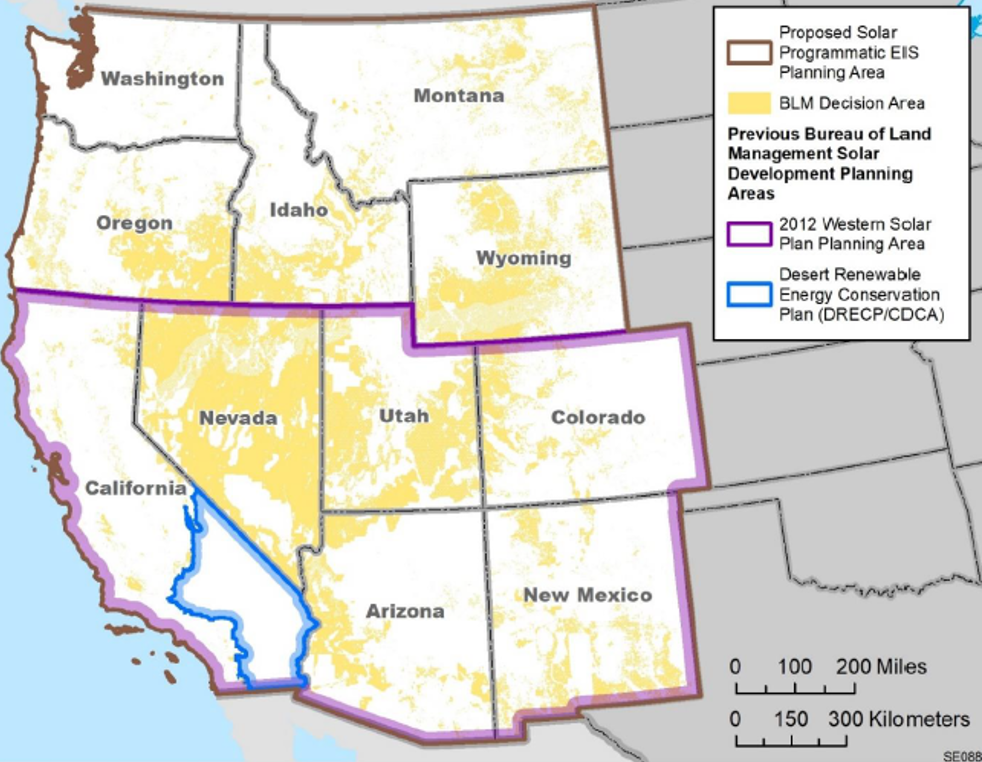2025
Comparably’s Best Company Outlook
* Providing engineering services in these locations through SWCA Environmental Consulting & Engineering, Inc., an affiliate of SWCA.

From the experts we hire, to the clients we partner with, our greatest opportunity for success lies in our ability to bring the best team together for every project.
That’s why:

At SWCA, sustainability means balancing humanity’s social, economic, and environmental needs to provide a healthy planet for future generations.

SWCA employs smart, talented, problem-solvers dedicated to our purpose of preserving natural and cultural resources for tomorrow while enabling projects that benefit people today.

At SWCA, you’re not just an employee. You’re an owner. Everyone you work with has a stake in your success, so your hard work pays off – for the clients, for the company, and for your retirement goals.
BLM Presents Revised Strategy for Simplifying Solar Development in Western Regions
Following a year-long engagement initiative, BLM crafted the draft PEIS to address solar development on public lands spanning 11 western states.
Ross is a respected expert in infrastructure permitting with a decade of experience in project, program, and policy development, management, and implementation. His primary focus has been on streamlining and enhancing the transparency of permitting decisions across federal, state, tribal, and local governments while prioritizing public input and environmental resources.

Stephanie Hudgins serves as Vice President of Power and Energy at SWCA Environmental Consultants, bringing more than 24 years of experience in environmental consulting and permitting. She leads business development and strategic growth across SWCA’s Transmission, Generation, Oil & Gas, and Mining markets, supporting clients nationwide in delivering large-scale infrastructure projects. Stephanie plays a key role in shaping corporate strategy, optimizing cross-discipline collaboration, and driving integrated solutions that align with client goals and regulatory requirements.
Known for her relationship-driven approach, Stephanie works closely with clients, industry partners, and internal teams to identify growth opportunities and deliver value throughout the project lifecycle. Her technical background spans NEPA compliance, FERC licensing, Section 404 permitting, protected species consultations, and biological field studies. She has successfully managed multidisciplinary teams and complex permitting efforts across a wide range of industries, including renewables, natural gas transmission, water resources, and private development.
Stephanie is a trusted partner to corporate and utility clients navigating evolving regulatory landscapes. Her focus on execution, responsiveness, and collaboration ensures that clients receive thoughtful, strategic support from planning through construction.



On January 17, 2024, the U.S. Bureau of Land Management (BLM) announced the release of its draft Programmatic Environmental Impact Statement (PEIS) for utility-scale solar energy projects on public lands across the western region. Following a year-long engagement initiative, BLM crafted the draft PEIS to address solar development on public lands spanning 11 western states.
BLM’s objective is to steer proposals for solar rights-of-way (ROWs) away from public lands prone to resource conflicts while retaining the flexibility to address specific resource concerns at individual sites. The agency’s preferred approach involves making lands with minimal natural resource limitations, slopes of less than 10%, and proximity within 10 miles to existing or planned transmission infrastructure available for solar applications. Proposed amendments to land use plans, as outlined in the draft PEIS, would designate areas meeting these criteria as solar application areas.
In December 2022, U.S. Secretary of the Interior Deb Haaland announced plans for BLM to develop an updated PEIS to guide solar energy development across public lands in the western region. The revised land use plan amendments included in the PEIS will replace the 2012 Western Solar Plan, which addressed solar development in six western states, and reflects increased demand for solar energy, particularly photovoltaic technology, projected through 2045. It aligns with the Biden-Harris administration’s goal to boost renewable energy development on public lands and responds to the Energy Act of 2020, which directed the U.S. Department of the Interior to issue permits authorizing the production of at least 25 gigawatts of electricity from wind, solar, and geothermal energy projects by 2025. The updated plan seeks to enhance the BLM’s utility-scale solar energy planning in response to national priorities and changes in solar technologies.
BLM’s effort to streamline solar permitting on public lands, as directed by Executive Order 14008, aims to meet growing renewable energy demands while ensuring responsible land management. The revised PEIS addresses solar energy development beyond the original six states covered in the 2012 Western Solar Plan, reflecting increased developer interest in BLM-administered lands, evolving national objectives, and technological advancements. Through this initiative, BLM seeks to facilitate sustainable solar development while addressing resource concerns and maximizing energy production from renewable sources to meet national energy goals.
The draft PEIS assesses amendments to BLM’s area-specific resource management plans (RMPs) to guide solar development. This analysis encompasses environmental, cultural, and economic considerations for utility-scale solar projects, including the impact of supporting infrastructure like transmission lines. However, BLM specifies that while supporting facilities are evaluated, the new land use decisions outlined in the draft PEIS pertain solely to solar generation facilities, with management decisions for supporting facilities continuing under existing land use plans and policies.
Despite identifying lands available for solar development at a programmatic level, the proposed land use amendments in the draft PEIS do not obviate the need for project-specific environmental review. Each development application will still undergo analysis in accordance with the National Environmental Policy Act (NEPA) and other relevant laws, ensuring consideration of site-specific impacts before any agency decision regarding the granting of a ROW for public land development. Additionally, BLM proposes to redefine utility-scale solar to include generation facilities with a nameplate capacity of 5 megawatts or more, aligning with industry trends and acknowledging the growing integration of solar with battery storage, with the draft PEIS accounting for the footprint of on-site storage facilities.
The draft PEIS would amend BLM RMPs in 11 states, including the initial six covered by the 2012 Western Solar Plan—Arizona, California, Colorado, Nevada, New Mexico, and Utah—alongside Idaho, Montana, Oregon, Washington, and Wyoming. The Desert Renewable Energy Conservation Plan (DRECP) area in Southern California, spanning around 27 million acres, is excluded from the PEIS. BLM’s decision to exclude the DRECP from the draft PEIS stems from its ongoing landscape-scale conservation efforts and the streamlined renewable energy permitting introduced in the 2016 plan.

The draft PEIS evaluates five alternative approaches to identifying lands available for or excluded from utility-scale solar development. Among these, Alternative #3, focusing on transmission proximity, was identified by BLM as the agency’s preferred choice.
Here’s a breakdown of the alternatives:
The 2012 Western Solar Plan categorized land into three types for solar development: solar energy zones (SEZs), exclusion zones, and variance areas. In response to feedback favoring a simpler approach, the draft PEIS proposes condensing this into two categories: solar application areas and excluded zones. This would eliminate variance areas and related processes. Despite the original intent to prioritize SEZs, BLM has observed equal utility-scale solar development applications in both SEZs and variance areas since 2012. This streamlined approach aims to reduce redundancy and better align with BLM’s mission for multiple uses and sustained yield of public lands.
On Friday, January 19, 2024, BLM initiated the formal 90-day comment period for the draft PEIS by publishing the Notice of Availability in the Federal Register. This period, which closes on April 18, 2024, allows stakeholders to submit written feedback or participate in virtual or in-person scoping meetings. Subsequently, BLM will develop a final PEIS and Record of Decision to amend BLM’s land use plans based on the comments received.
SWCA’s BLM solar energy and land development experts stand ready to help you evaluate potential impacts on your development plans, draft public comments in response to this draft PEIS, and navigate regulatory changes as they take shape. For more information, reach out to your SWCA project manager or one of our experts below: